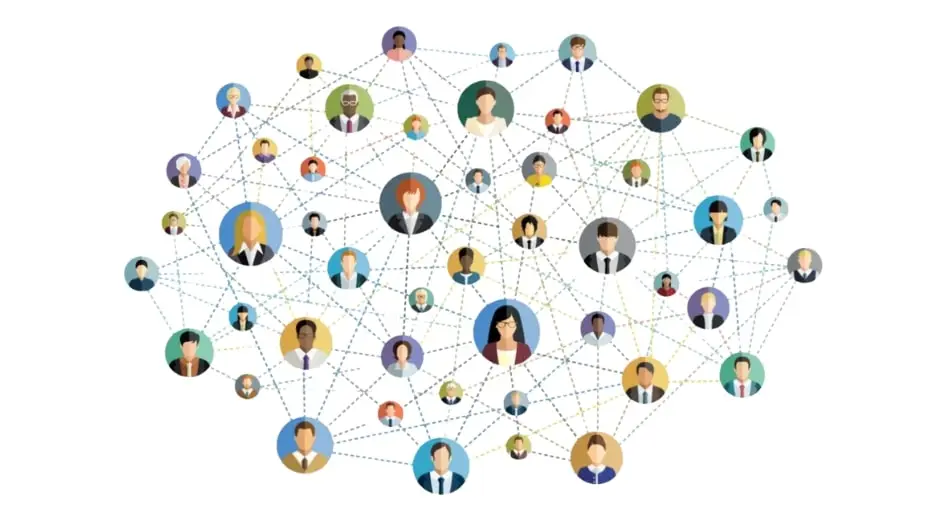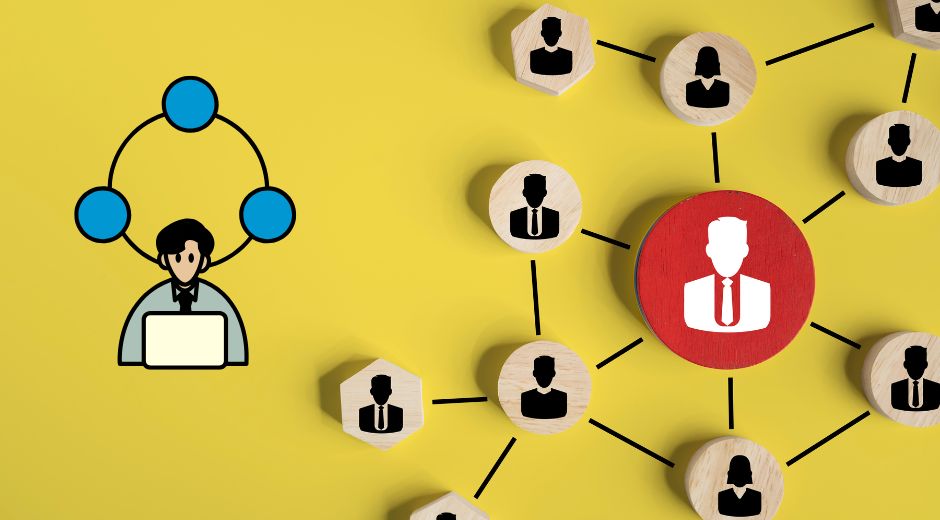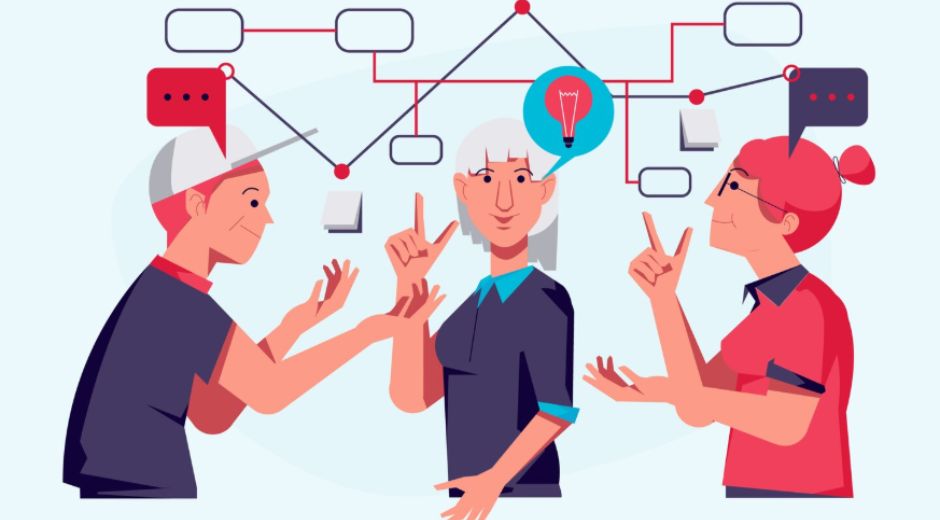The Invisible Web That Powers Modern Collaboration
In today’s hyper-connected world, collaboration is no longer limited by geography or time zones. Teams, businesses, and organizations rely on an invisible network of digital tools, platforms, and protocols that make real-time collaboration seamless. This hidden infrastructure is what we call the digitalweb, and it is transforming how people work together globally.
From cloud computing to AI-driven project management, the digitalweb underpins modern productivity, enabling organizations to achieve efficiency, innovation, and flexibility like never before.
This article explores the components, benefits, challenges, and future of the digitalweb in modern collaboration.
1. Understanding the Digitalweb
The term digitalweb refers to the interconnected network of technologies, applications, and protocols that facilitate online collaboration and communication. Unlike the visible web, which we access via browsers and apps, the digitalweb includes backend systems, APIs, servers, and cloud infrastructures that make collaborative work possible.
Components of the Digitalweb:
-
Cloud Platforms: Google Workspace, Microsoft 365, and Slack provide storage, communication, and productivity tools.
-
Collaboration Software: Tools like Asana, Trello, and Monday.com help teams organize tasks and manage projects.
-
Communication Networks: Video conferencing (Zoom, Teams), instant messaging, and VoIP enable real-time interaction.
-
APIs and Integrations: Connect different applications to automate workflows and streamline information exchange.
-
Security and Protocols: Encryption, VPNs, and secure protocols ensure that collaboration is safe and compliant.
2. How the Digitalweb Transforms Collaboration
The digitalweb allows teams to work together efficiently regardless of location. Its effects are visible across multiple dimensions:
Enhanced Productivity:
-
Real-time updates ensure everyone is working on the latest version of documents.
-
Task automation reduces repetitive work.
-
Centralized dashboards provide clarity on progress and deadlines.
Global Reach:
-
Teams can collaborate across continents.
-
Language translation tools and AI-assisted communication remove barriers.
-
Remote work becomes feasible without compromising efficiency.
Innovation Acceleration:
-
Collaborative platforms encourage brainstorming and knowledge sharing.
-
AI algorithms analyze project data to suggest improvements.
-
Rapid prototyping and iteration are possible through shared resources.
3. Core Technologies Behind the Digitalweb
Several cutting-edge technologies make the digitalweb functional and powerful:
-
Cloud Computing:
-
Provides scalable storage and processing power.
-
Enables teams to access applications and data anywhere, anytime.
-
Artificial Intelligence:
-
Automates repetitive tasks and prioritizes workflows.
-
Provides insights from collaborative data analytics.
-
Blockchain:
-
Ensures transparent and secure collaborative processes.
-
Useful for decentralized teams managing shared resources.
-
Internet of Things (IoT):
-
Connects physical devices to collaborative systems.
-
Enables real-time data sharing from sensors and machinery.
-
5G and Advanced Networking:
-
Reduces latency for seamless video conferencing and file transfers.
-
Supports real-time collaboration for resource-intensive applications.
4. Key Benefits of Leveraging the Digitalweb
Organizations that embrace the digitalweb gain several advantages:
Efficiency and Time Savings:
-
Cloud-based collaboration eliminates the need for back-and-forth email exchanges.
-
Automated workflows and integrated tools reduce human error.
Cost Reduction:
-
Remote collaboration reduces travel, office space, and physical resource costs.
-
Subscription-based platforms scale with the team’s size, avoiding upfront infrastructure investments.
Enhanced Security and Compliance:
-
Encrypted storage and secure access protocols protect sensitive information.
-
Digital audit trails improve accountability and compliance with regulations.
Agility and Scalability:
-
Teams can scale up or down instantly without physical infrastructure changes.
-
Businesses can quickly adapt to market demands and new projects.
5. Challenges of the Digitalweb
Despite its advantages, leveraging the digitalweb comes with challenges:
Security Risks:
-
Cyberattacks targeting collaboration platforms are increasing.
-
Remote work introduces vulnerabilities if endpoints are not secured.
Over-Reliance on Technology:
-
Teams may struggle if systems fail or experience downtime.
-
Excessive automation can reduce critical thinking and creativity.
Digital Fatigue:
-
Continuous online interaction can lead to burnout.
-
Poorly integrated systems may overwhelm users with notifications.
Data Privacy Concerns:
-
Storing sensitive information across multiple platforms increases exposure risk.
-
Compliance with global privacy laws like GDPR requires careful management.
Mitigation Strategies:
-
Implement multi-factor authentication and robust encryption.
-
Provide training on digital hygiene and tool usage.
-
Select integrated, user-friendly platforms to reduce cognitive load.
6. Industries Harnessing the Digitalweb
Several sectors are benefiting from digitalweb-enabled collaboration:
Technology and Software Development:
-
Agile and DevOps teams rely on shared platforms and CI/CD pipelines.
Healthcare:
-
Remote patient monitoring, telemedicine, and collaborative research depend on secure digital networks.
Education:
-
Online classrooms, collaborative assignments, and e-learning platforms bridge geographic gaps.
Finance:
-
Real-time data sharing supports collaborative analysis, reporting, and investment decision-making.
Manufacturing and Supply Chains:
-
IoT and digital twin technologies enable cross-border collaboration and predictive maintenance.
7. The Future of the Digitalweb
The digitalweb is evolving rapidly, with several key trends shaping its future:
-
AI-Driven Collaboration: Intelligent assistants will manage schedules, prioritize tasks, and suggest resources automatically.
-
Virtual and Augmented Reality: Immersive collaboration environments will simulate in-person experiences.
-
Decentralized Collaboration Platforms: Blockchain-based systems will provide secure, trustless collaboration for global teams.
-
Enhanced Data Analytics: Insights from collaborative interactions will improve workflows and decision-making.
-
Integration of Emerging Technologies: IoT, edge computing, and 5G will further enhance real-time collaborative capabilities.
8. Best Practices for Leveraging the Digitalweb
Organizations and teams can maximize the digitalweb by following key best practices:
-
Centralize Communication: Use unified platforms for messaging, video calls, and document sharing.
-
Automate Routine Tasks: Reduce repetitive work with AI and workflow automation.
-
Prioritize Security: Implement encryption, VPNs, and access controls.
-
Train Teams Effectively: Ensure team members are proficient with collaborative tools.
-
Balance Digital and Human Interaction: Combine technology with face-to-face or synchronous collaboration to prevent burnout.
Conclusion: The Digitalweb as the Backbone of Modern Collaboration
The digitalweb is more than just a collection of tools — it is the invisible infrastructure that powers modern collaboration. By connecting people, devices, and applications seamlessly, it enables innovation, productivity, and global connectivity.
As 2025 progresses, businesses, educators, healthcare providers, and governments will increasingly rely on the digitalweb to coordinate efforts, share knowledge, and solve complex problems. Embracing this invisible network responsibly and strategically is essential for organizations that wish to thrive in the modern digital landscape.
Simple Entrepreneurship

Strategic Partnerships: The Hidden Power Behind Business Growth and Lasting Networks
Strategic Partnerships explores how collaboration, trust, and shared vision create strong business growth and redefine networking in the modern economy.

Brand Authenticity: The New Currency of Modern Marketing
Brand Authenticity explores how genuine storytelling, trust, and transparency build lasting relationships and drive success in modern marketing.

Sustainable Investing: Building Wealth with Purpose and Long-Term Impact
Sustainable Investing explores how conscious investors combine profitability with social and environmental responsibility to shape a better financial future.

Adaptive Leadership: Guiding Entrepreneurs Through Constant Change
Adaptive Leadership explores how entrepreneurs can navigate uncertainty, motivate teams, and turn change into strategic opportunity in a fast-evolving world.

Collaborative Mindset: Redefining the Power of Modern Networking
Collaborative Mindset explores how cooperation, shared growth, and mutual trust redefine modern networking and create stronger professional communities.

Emotional Branding: The Secret Language of Modern Marketing
Emotional Branding reveals how powerful feelings shape brand loyalty, influence consumer trust, and build authentic long-term connections in modern marketing.

Financial Agility: The Key to Staying Ahead in Modern Business
Financial Agility explores how businesses adapt, plan, and thrive in volatile markets by mastering flexibility, smart resource allocation, and data-driven finance.













